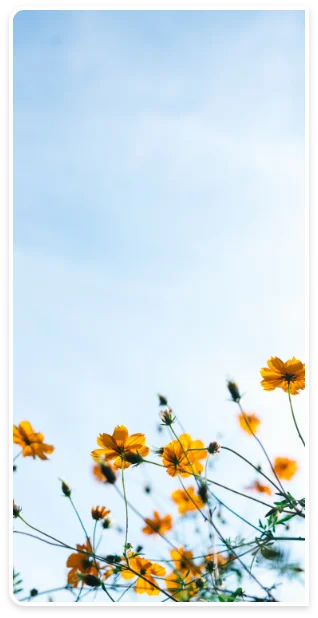
The year was 1967. It was the dawn of the Chinese Cultural Revolution. Anti-intellectualism was at its height. Schools and research institutes had been shut down, the great scientific minds of the nation banished to remote camps for “re-education”. Most scientific fields had ground to a halt entirely.
At the same time, the North Vietnamese Army and Viet Cong were suffering vicious mortality rates as malaria spread amongst the soldiers. The North Vietnamese Prime Minister appealed to the Chinese Premier for medical assistance, resulting in the clandestine assembly of some 600 scientists at the Beijing Hotel on the 23rd of May.
That day marked the launch of the secret military research program, Project 523. Pharmaceutical chemist, Tu Youyou, headed the Project’s research group at her institute and led the screening of some 2000 Chinese herbs. Three years of investigation led to one effective compound found in sweet wormwood, known as Artemisia annua, or Qinghao as it’s known in China.

Qinghoa appeared to inhibit the parasite, but after repeated failed experiments, Tu turned to the ancient medical classic: A Handbook of Prescriptions for Emergencies, written by Ge Hong (284-346 CE). Ge Hong described steeping Qinghoa in cold water and wringing out the juice. It was then Tu realized that hot water extraction was damaging the bioactive molecules in the compound. She suggested using a low-temperature ether for extraction instead.
The new extract showed 95-100% inhibition of malaria in mice models. By 1972, Tu and her team had isolated the pure antimalarial compound, Artemisinin, and its derivative dihydroartemisinin. Tu bravely volunteered as the first human subject, viewing it as her responsibility as head of the research group. It was found safe for human trials.

The discovery was one of the greatest breakthroughs in human health during the 20th century, saving millions of lives around the globe. And in 2015, Tu was awarded the Nobel Prize in Medicine. Her work opened the floodgates to the scientific investigation of Chinese herbs, but it’s important to note that without consulting the traditional narrative of herbs, the full potential of Artemisia would likely remain hidden to this day.
There is deep medical wisdom in the traditional herbs and narratives of Chinese Medicine. One can only imagine the potential yet to be unlocked.
The Philosophy of Chinese Herbal Medicine
Traditional Chinese Medicine (TCM) emerged as a formal discipline some 3000 years ago, during the Zhou Dynasty. But the earliest medical writings on curative herbs are found in the texts Classic of Changes (Yi Jing), written in the late 9th century BCE, and Classic of Poetry (Shi Jing), a compilation of poems ranging from at least 1100 BCE.
The discipline drew on Chinese philosophy and religion, promoting Holism and balance in the body. Ingrained is the metaphysical concept of Yin and Yang, symbolizing polarities such as cold-hot, feminine-masculine, and exterior-interior. When applied to the body, they form a system in which practitioners are able to diagnose imbalance (the root of a syndrome or disease) and restore balance, following the principles of Taoism.
Herbs with “hot” properties could thus be used to treat “cold” syndromes, and vice versa. Herbs and treatments were characterized by their nature (hot, warm, cool or cold) and flavor, and formulated uniquely for each individual patient, depending on their specific syndrome.
The medical philosophy also incorporated the five natural elements to conceptualize the human body, as well as various constitutions and herbal remedies. The five elements are associated with the generating circle (Wood→ Fire → Earth → Metal → Water → Wood) and the overcoming or controlling circle (Wood → Earth → Water→ Fire → Metal → Wood), reflecting the way the organs in the body are connected and can be affected by certain herbs.
TCM further developed into a formal discipline as knowledge was accumulated and documented in the classic works that would become the foundation of the discipline such as Inner Canon of the Yellow Emperor (Huang Di Nei Jing, 26 BCE), Yellow Emperor’s Canon of Eighty-One Difficult Issues (Nan Jing, 106 CE), Treatise on Cold Damage Disorders (Shang Han Lun, 206 CE), and Shennong’s Materia Medica (Shen Nong Ben Cao Jing, 220 CE).

Integrative Medicine: A Path Forward
The 19th century saw ‘traditional’ medicine evolve into a scientific discipline, with many herbal remedies coming under the scientific lens of the West in the 20th and early 21st centuries. This has roused some discourse warning against the complete Westernization of traditional techniques, for the sake of preserving long-standing cultural narratives. After all, TCM evolved from some 3000 years of trial and error and is deeply intertwined with cultural beliefs and philosophy.
Thankfully, the last century has seen not so much the deconstruction of traditional herbal narratives, but the development of traditional and modern medicine in tandem. This has resulted in a new branch of medicine integrating traditional Chinese and Western disciplines.
Integrative Medicine offers an approach that is both evidence-based and holistic. The strength of each discipline is utilized to address the full system, not merely parts of the whole. By merging the two practices, we hope to further unlock the potential of herbal compounds for the advancement of healthcare and the benefit of patients around the world.





